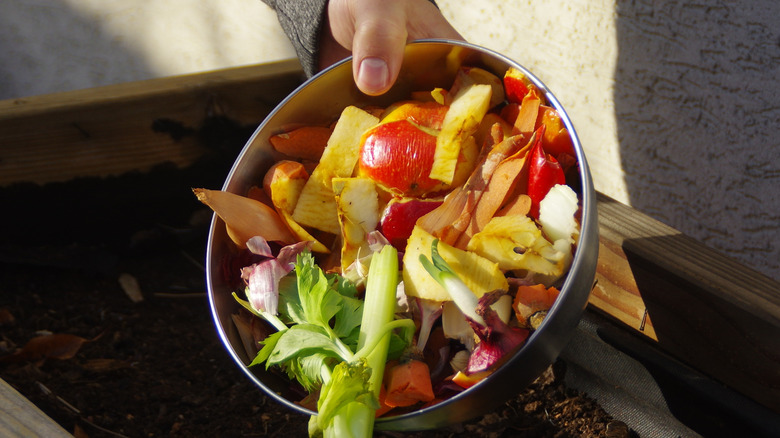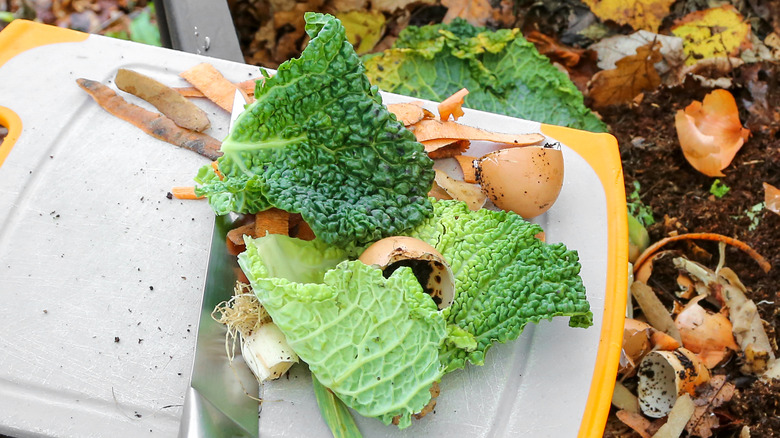Scientists Have Cemented A Solution For Food Waste — Literally
It can very easily be argued that food waste is a scourge of our society. The EPA reports that one-third of food produced in the U.S. ends up being thrown out, with 81% (20.3 tons) of household food waste ending up being buried or incinerated.
Aside from the fact that millions of American households struggle to put food on the table (USDA data shows), clogging up landfills and polluting the air by destroying unwanted food doesn't exactly seem to be an efficient process. According to WWF, food waste is believed to cause up to 8% of the human-made greenhouse gas emissions that contribute to climate change.
To try to reduce such extreme wastage and negative effects on the environment, experts have devised a cunning method of diverting unused food from the disposal. BBC Newsround reports that scientists have successfully converted excess food into cement that could be used to construct houses — but how did they manage it?
Cabbage is most useful for creating cement
According to BBC Newsround, investigators at Japan's University of Tokyo used leftover food including orange and banana peel, onions, pumpkins, seaweed, tea leaves, and coffee grounds to form a substance similar to cement. The food-based cement was found to be generally stronger than the regular product, and cabbage was responsible for creating the toughest cement of all — four times more durable than traditional cement.
To make the cement, researchers dried the waste food before turning them into powder and subjecting them to heat. Japan Today explains that spices were used to alter flavors and scents so that the cement could be broken down by boiling it, allowing it to be eaten if required. The initial expectation is that the cement could be used for emergency housing after disasters, but the scientists hope it will eventually eradicate ordinary cement and plastic from building processes.
The EPA notes that other food recycling schemes also take place. Waste food is converted into biogas (used to generate electricity and heat, notes the U.S. Department of Energy), biodiesel for fuel, and ingredients for making soap and cosmetics.

